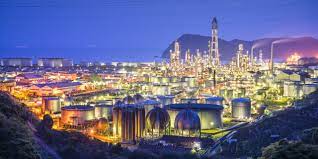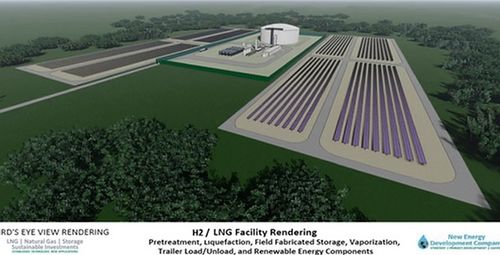Vinson & Elkins Partner Alan Alexander, whose clients include OCI and Lotus Infrastructure, has watched the hydrogen project development space evolve from a fledgling idea to one that is ready for actionable projects.
In the meantime, a number of novel legal and commercial issues facing hydrogen project developers have come to the forefront, as outlined in a paper from the law firm this week, which serves as a guide for thinking through major development questions that can snag projects.
In an interview, Alexander, a Houston-based project development and finance lawyer, says that, although some of the issues are unique – like the potential for a clean fuels pricing premium, ownership of environmental attributes, or carbon leaking from a sequestration site – addressing them is built on decades of practice.

“The way I like to put it is, yes, there are new issues being addressed using traditional tools, but there’s not yet a consensus around what constitutes ‘market terms’ for a number of them, so we are having to figure that out as we go,” he says.
Green hydrogen projects, for example, are “quite possibly” the most complex project type he has seen, given that they sit at the nexus between renewable electricity and downstream fuels applications, subjecting them to the commercial and permitting issues inherent in both verticals.
But even given the challenges, Alexander believes the market has reached commercial take-off for certain types of projects.
“When the hydrogen rush started, first it was renewables developers who knew a lot about how to develop renewables but nothing about how to market and sell hydrogen,” he says. “Then you got the people who were very enthusiastic about developing hydrogen projects but didn’t know exactly what to do with it. And now we’re beginning to see end-use cases develop and actionable projects that are very exciting, in some cases where renewables developers and hydrogen developers have teamed up to focus on their core competencies.”
A pricing premium?
In the article, Vinson & Elkins lawyers note that commodities pricing indices are not yet distinguishing between low-carbon and traditional fuels, even though a clean fuel has more value due to its low-carbon attributes. The observation echoes the conclusion of a group of offtakers who viewed the prospect of paying a premium for clean fuels as unrealistic, as they would need to pass on the higher costs to customers.
Eventually, Alexander says, the offtake market should price in a premium for clean products, but that might depend in the near term on incentives for clean fuels demand, such as carbon offsets and levies, like the EU’s Carbon Border Adjustment Mechanism.
“Ultimately what we need is for the market to say, ‘I will pay more for low-carbon products,’” he says. “The mindset of being willing to pay more for low-carbon products is going to need to begin to permeate into other sectors. 30 or 40 years ago the notion of paying a premium for an organic food didn’t exist. But today there are whole grocery store chains built around the idea. When the consumer is willing to pay a premium for low-carbon food, that will incentivize a farmer to pay a premium for low carbon fertilizer and ammonia, which will ultimately incentivize the payment of a premium for low-carbon hydrogen. The same needs to repeat itself across other sectors, such as fuels and anything made from steel.”
The law firm writes that US projects seeking to export to Europe or Asia need to take into account the greenhouse gas emissions and other requirements of the destination market when designing projects.
In the agreements that V&E is working on, for example, clients were first focused on structuring to make sure they met requirements for IRA tax credits and other domestic incentives, Alexander says. Meanwhile, as those clean fuels made their way to export markets, customers were coming back with a long list of requirements, “so what we’re seeing is this very interesting influx” of sustainability considerations into the hydrogen space, many of which are driven by requirements of the end-use market, such as the EU or Japan.
The more stringent requirements have existed for products like biofuels for some time, he adds, “but we’re beginning to see it in hydrogen and non-biogenic fuels.”
Sharing risk
Hydrogen projects are encountering other novel commercial and legal issues for which a “market” has not yet been developed, the law firm says, especially given the entry of a raft of new players and the recent passage of the Inflation Reduction Act.
In the case of a blue hydrogen or ammonia project where carbon is captured and sequestered but eventually leaks from a geological formation, for example, no one knows what the risk truly is, and the market is waiting for an insurance product to provide protection, Alexander says. But until it does, project parties can implement a risk-sharing mechanism in the form of a cap on liabilities – a traditional project development tool.
“If you’re a sequestration party you say, ‘Yeah, I get it, there is a risk of recapture and you’re relying on me to make sure that it doesn’t happen. But if something catastrophic does happen and the government were to reclaim your tax credits, it would bankrupt me if I were to fully indemnify you. So I simply can’t take the full amount of that risk.’”
What ends up getting negotiated is a cap on the liability, Alexander says, or the limit up to which the sequestration party is willing to absorb the liability through an indemnity.
The market is also evolving to take into account project-on-project risk for hydrogen, where an electrolyzer facility depends on the availability of, for example, clean electricity from a newly built wind farm.
“For most of my career, having a project up and reaching commercial operations by a certain date is addressed through no-fault termination rights,” he says. “But given the number of players in the hydrogen space and the amount of dollars involved, you’re beginning to see delay liquidated damages – which are typically an EPC concept – creep into supply and offtake agreements.”
If a developer is building an electrolyzer facility, and the renewables partner doesn’t have the wind farm up and running on time, it’s not in the hydrogen developer’s interest to terminate through a no-fault clause, given that they would then have a stranded asset and need to start over with another renewable power provider. Instead, Alexander says, the renewables partner can offset the losses by paying liquidated damages.
Commercial watch list
In terms of interesting commercial models for hydrogen, Alexander says he is watching the onsite modular hydrogen development space as well as power-to-fuels (natural gas, diesel, SAF), ammonia and methanol, given the challenges of transporting hydrogen.
“If you’re going to produce hydrogen, you need to produce it close to the place where it’s going to be consumed, because transporting it is hard. Or you need to turn it into something else that we already know how to transport – natural gas, renewable diesel, naphtha, ammonia.”
Alexander believes power-to-fuels projects and developers that are focused on smaller, on-site modular low-carbon hydrogen production are some of the most interesting to watch right now. Emitters are starting to realize they can lower their overall carbon footprint, he says, with a relatively small amount of low-carbon fuels and inputs.
“The argument there is to not completely replace an industrial gas supplier but to displace a little bit of it.”
At the same time, the mobility market may take off with help from US government incentives for hydrogen production and the growing realization that EVs might not provide a silver-bullet solution for decarbonizing transport, Alexander adds. However, hydrogen project developers targeting the mobility market are still competing with the cost of diesel, the current “bogey” for the hydrogen heavy mobility space, Alexander says.







